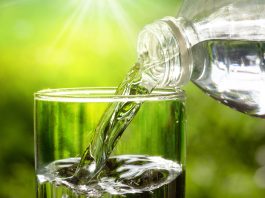The Ofwat Innovation Fund underscores the water sector’s transformation, highlighting the need for new technologies to enhance water quality and promote sustainable sludge management.
The global water sector is undergoing a critical transformation, reducing its environmental footprint while improving water quality in our rivers, streams and coastlines through cutting-edge innovation.
An increasingly pressing environmental challenge faced by the industry is the sustainable management of treated sewage sludge, particularly in the context of removing harmful contaminants such as PFAS (per- and polyfluoroalkyl substances), also known as ‘forever chemicals.’
These substances persist in the environment, affecting biodiversity and pose serious health risks, making their removal crucial for protecting both ecosystems and human health.
To confront these issues, the Ofwat Innovation Fund is supporting groundbreaking projects addressing these environmental concerns, including a number that have a strong focus on sludge management and the elimination of PFAS.
Understanding sewage sludge and its environmental impact
Sludge is a bi-product of treating sewage – a combination of solid matter and the remnants of dead bacterial cells left over from the treatment process. This bioresource contains valuable nutrients such as phosphorus and nitrogen, which improve agricultural soils when applied as fertiliser.
On a national level, the UK produces around 1.2 million dry tons of sludge per year, and this is increasing. In 2020, 94% of sludge in the UK was reused for soil and agriculture.
However, sludge can also harbour contaminants, such as microplastics, heavy metals, and, most notably, PFAS. These synthetic chemicals can be found in industrial and consumer products, which can make their way into wastewater and subsequently into treated sludge.
There is increasing understanding that traditional practices of spreading treated sludge on land could introduce these contaminants into soils. Once in the soil, these chemicals could make their way into waterways and potentially disrupt ecosystems, posing longer-term environmental risks.
We now have an opportunity to support the development, scaling, and implementation of sustainable solutions to better manage PFAS in sludge and wastewater with the ultimate aim of preventing their entry into natural systems.
The growing issue of PFAS
Research is increasing understanding of the impacts of PFAS on the environment. Around the world, evidence has found PFAS present in most stages of the water cycle.
Conventional water treatment methods were not developed with PFAS in mind, as these chemicals resist breakdown through typical filtration and chemical processes. This limitation underscores the need to support new and innovative technologies to address the growing PFAS challenge.
Among the promising solutions emerging is gasification, a process that can destroy PFAS and other contaminants by breaking them down into simpler, less harmful compounds.
Gasification not only neutralises harmful chemicals but also helps manage other pollutants, such as microplastics, thereby protecting both soil and waterways. By preventing these contaminants from entering the environment, gasification technology contributes to improving overall water quality and advancing the sustainability of sludge treatment practices.
Making the most of our bioresources
The Sewage Sludge Gasification project – a partnership led by Yorkshire Water, in collaboration with the Carbon Trust, Queens University Belfast, EnertecGreen, and seven water companies across the UK and Ireland is a winner of the Ofwat Innovation Fund’s fourth Water Breakthrough Challenge.
Sewage sludge is exposed to high temperatures in a controlled oxygen environment, causing it to break down into useful gases and other bioresources – and, importantly, destroys PFAS, which is such a threat to the health of the environment and to people.
It offers a productive alternative to spreading sludge to land. In addition to producing hydrogen-rich syngas (short for synthetic gas) to generate electricity, the gasification process leaves behind biochar and vitrified ash ‘stones’.
The carbon-rich biochar, which resembles small pieces of charcoal, will be tested as a filter to treat wastewater and as an additive in brick manufacturing. It could also be used as a soil improver to increase water and nutrient retention, and as it doesn’t readily decompose, it is safe in the knowledge that it is PFAS-free. The biochar could also be a good vehicle for sequestering carbon in soil – though it must be properly managed to ensure soil pH levels are not negatively impacted.
The vitrified ash could be used as aggregate in the construction industry to reduce the embodied carbon footprint of concrete. Syngas is a blend of hydrogen, carbon monoxide, carbon dioxide, and methane, and it has the potential to be used to produce green electricity, along with other high-value products.
The project’s gasification plant is expected to generate 50 megawatts of electricity (MWe) from sludge, which would cover its operational energy needs and contribute excess power to the grid. This innovation presents a significant opportunity for the water industry to reduce its reliance on traditional energy sources and lower its carbon footprint.
There is also a significant opportunity to scale this technology across the UK. If implemented nationally, sewage sludge gasification could generate up to 375 MWe of energy (enough to power more than 300,000 homes), significantly reducing the sector’s carbon emissions and supporting the country’s broader energy transition.
In a similar vein, another winning project – Proving the Concept of Sewage Sludge Pyrolysis – aims to deliver the first continuously operating, sludge-fed UK-based pyrolysis demonstration plant. This project, led by Thames Water in partnership with Cranfield University, Helsinki Region Environmental Services (HSY), Southern Water, Stantec Ltd, Uisce Éireann, and Yorkshire Water, aims to demonstrate the opportunities for bioresource circularity and to reduce the quantities of sludge recycled to agricultural land.
Meanwhile, PFAS – A whole system approach to an impossible problem, led by Severn Trent Water in partnership with Cranfield University, Spring Innovation Ltd and five water companies – is investigating treatment options for removing and destroying concentrations of PFAS from water.
Removing damaging chemicals from our river ecosystems
Bioresource recovery, mostly from sludge, will prove essential to a functioning circular economy. Much of the journey to achieving circularity is still uncertain, and further research and innovation are needed. This presents a significant opportunity for innovators in the water sector, particularly as the sector pursues the goal of reaching net zero emissions by 2030.

There will be no silver bullet in this journey; multiple challenges require diverse solutions and approaches. Beyond projects exploring improved sludge management, partnerships developing approaches to resource recovery from wastewater have also been supported by the fund.
The recent Innovation Fund learning report, ‘Circularity in Water: resource recovery and circular economies in the water sector’, shines a light on some of the projects pioneering innovative circular approaches.
Northumbrian Water, in collaboration with the University of Newcastle upon Tyne, the University of Northumbria at Newcastle, and Dŵr Cymru Welsh Water, is trialling the use of an innovative loofah to remove and recover phosphorous from wastewater.
Recovering phosphorus from sewage is a growing problem for the water industry. Phosphorus can have a big impact on river health, causing algal blooms in watercourses that harm animals and plants and affect drinking water quality. To protect the environment, discharges from wastewater treatment works are regulated, and by 2027, 95% of the population in England will have phosphorus removal technologies at the sewage treatment works.
Typically, phosphorus is removed using a chemical called ferric, which is a finite resource with reliability issues around supply, transport, and sustainability. Once removed, the phosphorus is not routinely recycled. Meanwhile, largely mined phosphorus is used as a fertiliser by farmers, causing further environmental damage; by 2050, its supply will be challenging.
The innovative ‘SuPR Loofah’ treatment system will place micro-algae on a loofah material and use this to capture phosphorous from wastewater to prevent it from impacting rivers and streams. As well as being a more affordable and sustainable process, this world-leading circular approach will generate a vital form of phosphorous for use as fertiliser.
By recovering the phosphorus from wastewater, the approach piloted in this project can remove the reliance on phosphorus sourced through environmentally damaging methods and also remove the supply-chain-related reliability issues of ferric production and delivery.
While it is widely known that algae can effectively extract nitrogen and phosphorous in wastewater treatment processes, early indicators from the project show that algae, in combination with fungi and bacteria, can also effectively tackle other challenging pollutants such as heavy metals, pesticides, organic and inorganic toxins, waterborne pathogens, and even microplastics – all of which negatively impact water quality.
The approach shows great promise, but as with all innovation, there are challenges and gaps. The emergent nature of the technology and the fact that it is still progressing through technology readiness levels mean there are potential challenges around repeatability and scalability. Lab and field test results are very encouraging, but the next phase will see the technology put to the test at a larger scale across varying operational contexts and parameters.
The Innovation Fund learning report also identifies that there are significant steps to be taken to capitalise on the opportunities offered by resource recovery and circular economy models. Research suggests that although there are pockets of excellence, such as those explored in the report, circular economy approaches are generally not considered in a systematic way.
By incentivising innovation and encouraging the development of sustainable technologies through the Innovation Fund, Ofwat is helping to align the water sector with future regulatory changes and society’s expectations of the care we must have for our environment and our drinking water supplies.
Water companies, regulators, researchers, and other sectors must work together to share knowledge and best practices to embed innovative circular economy approaches so that they become business as usual.
From innovative pilots to impactful solutions at scale
As the Innovation Fund learning report concludes, unlocking waste as a resource within the water sector requires a cultural shift from a retroactive approach focused on accurately recording regulatory compliance to a proactive approach that focuses on circular economy opportunities.
The transition from traditional sludge management (for example) to sustainable, innovative solutions like gasification marks a significant transformation in how the water sector is seeking to grapple with complex environmental challenges that impact water quality.
However, market fragmentation and the lack of a centralised body overseeing circular economy opportunities for the water sector pose a challenge to the scalability and business-as-usual adoption of the practices.
Creating sector-wide targets and collaborative strategies to build critical mass in the UK will be essential to realise the full potential of circular economies in water and achieve sustainable growth.
Beyond the innovation phase, operational testing at scale across various operational contexts will be required to ensure the technologies trialled in the projects supported by the fund are effective, repeatable and scalable. This will strengthen the business case and further increase the potential for adoption, scale-up and wider deployment.
This will be crucial for these approaches to secure long-term, sustained funding and support, for the circular economy in water to succeed and for the innovative solutions to have a lasting and positive impact on water quality, river health and the wider environment.
Please note, this article will also appear in the 20th edition of our quarterly publication.





